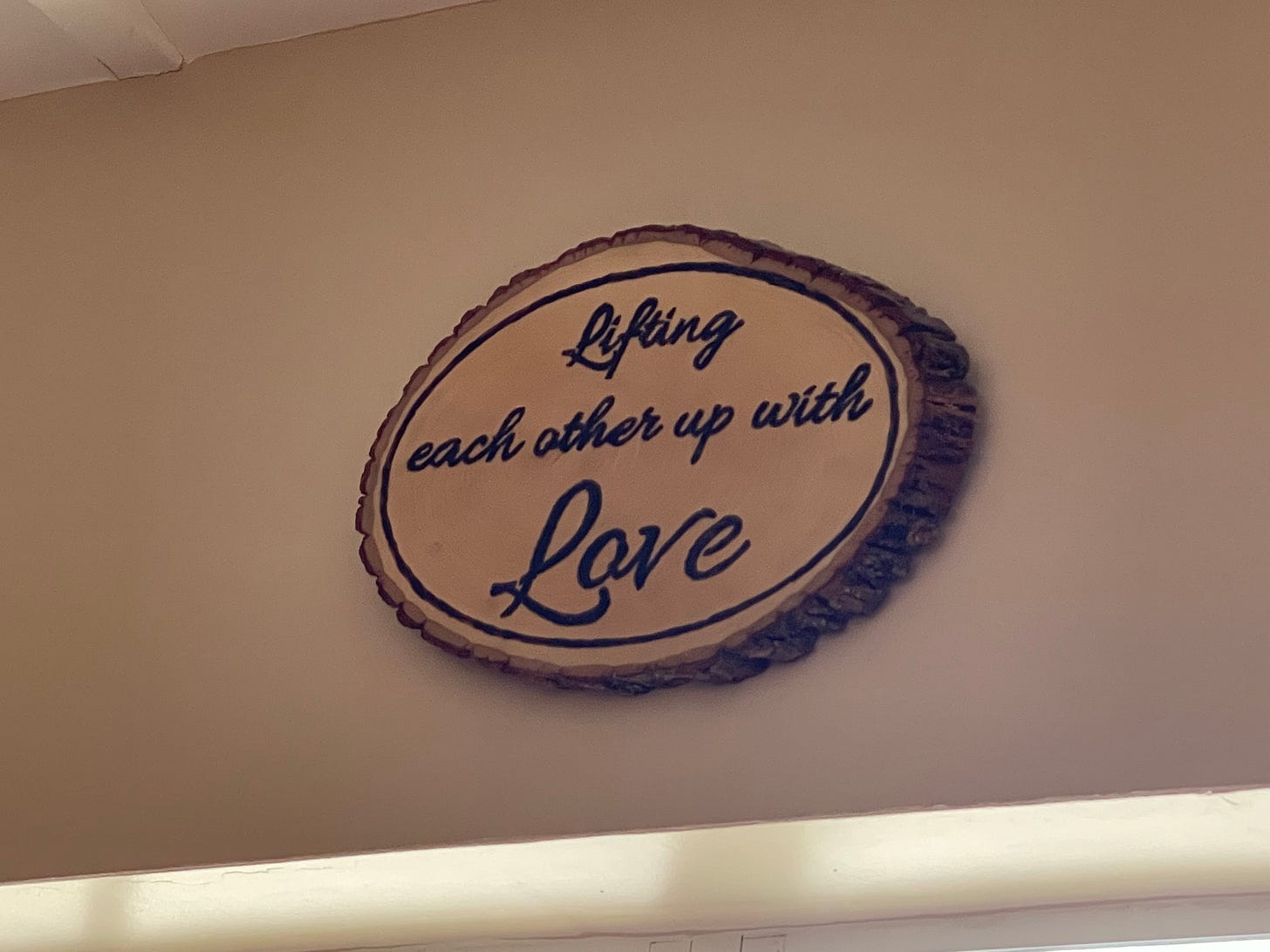Who Are We?
“We are not who we think we are. We are who we think we are not.” This quote popped up for me recently, spoken by personal growth speaker and author Sandy Gallagher. I read that several times because at first pass, this statement didn’t make any sense to me. It sounded, in fact, illogical.
“We are not who we think we are. We are who we think we are not.”
When I read that now, it makes perfect sense.
Aren’t we always talking and behaving as if we are everything other than what we truly desire to be or feel? We are constantly in the habit of putting ourselves down with negative self-talk, because we think we are either too bored or too busy, too tired or too hyper, too fat or too thin, too old or too young, too tall or too short, too dumb or too smart, too lazy or too industrious, too ugly or too pretty, and so on.
But, it really isn’t our fault. Countless studies have shown that between the ages of zero and 7, our emotional subconscious mind has no ability to reject, but accepts everything that is happening and is said around us, coming from our parents, other adults in our lives, and whatever’s going on around us in the external environment. And, it accepts all that as fact, that that is the way things are in the world around us. We are told this is the right way to think, this is the appropriate way to behave, etc.
If only we could just remember that none of the above is ever true. The truth is that we are always enough and even more than enough as we are. We have more than enough at all times and so we can be of service to others by giving generously, as they say, to those in need, and by receiving graciously. We exist in this reality as perfect beings. We merely have to remember we are spirit in a physical body, created in the image of the creator, whether that be God or the Universe, depending on our religious affiliations.
There is much literature supporting the fact that as spirit, we are energy and every thought from the mind is a vibration and travels. Science tells us that thought moves. Many people tend to picture an image of the brain whenever we try to define what the mind is, but the brain is no more the mind than a fingernail (quoted by Bob Proctor, personal growth speaker and author). Mind is movement and therefore every thought travels and contains speed. Research indicates that thought are cosmic waves that penetrate all time and space.
Since our behavior is governed by what we think about, if we make a conscious effort to flood our minds with everything we prefer to become, feel and receive in our lives, we can change the trajectory of where we end up. The more we focus and resist the circumstances that we do not want, the more they hang around. They will persist in the mind as vibrational energy and they will make their way into the body causing disease and illness. Last week, I mentioned to a client that to make a lasting change in his chronic health condition, the goal would be to create a new version of who he wanted to become, rather than to change who he was currently and then the old sick version of him would effortlessly disappear from simple neglect.
He thought it drastic to “neglect” his current and soon-to-be old self in order to entertain a new version. I explained that he didn’t really have a choice as science explains that the mind can only accept one thing at a time—either positive or negative thoughts. It cannot cater to polar opposites simultaneously. For this reason, what we put more attention to naturally grows without effort. If we focus more on what we’re grateful for, we will experience increased joy in our lives. It’s not rocket science nor is it magic, but just the way the mind works. As a result, whatever we do not focus on, simply falls away automatically and with ease from neglect.
But, what of the following sayings?
1. Nothing is good or bad; it’s just the way we think it.
2. There is no such thing as bad or good; things just are.
3. It is what it is, and things are how they are, so we just need to learn to accept it, harvest the good and leave the rest.
Because the mind has a tendency to lean towards negative bias, many of us require effort to think about anything in a positive way, and who we are and who we choose to become depend highly on the content in our minds. Whatever we write or speak about becomes an image in the mind that generates thought, which vibrates energetically at a certain frequency resulting in an emotion. Emotion is an interpretation of the vibration that then affects our behavior to take one action rather than another.
Many of us grew up with the mindset programming installed by our parents or other adults in our lives, as well as the environment in which we grew up. We then carried that identity with us throughout our adulthood and if we were fortunate and our parents were consciously aware and awakened, we weren’t burdened with mental conflicts and confusion; however, the majority of us weren’t that lucky and so we spend the rest of adult lives removing what we learned and relearning everything to facilitate our authentic selves.
Through many years of reflection and ongoing self-study, I realized that finding who I really am is a lifelong journey, without an end point. It is a lifelong story. Finding what I am passionate about requires that I know who I really am. Self-discovery is about being ok and accepting the fact that each day may bring me closer or further away to my definition of self. It’s about allowing us to know why each of us are here on earth, and that our purpose eventually finds and flows through us.
We then reach a point of perfect clarity and with that, courage follows and we become better decision makers. Many of us don’t even try to believe that our present circumstances can change. By a set of scientific and natural laws that govern our actions and behavioral patterns (Working With The Law by Raymond Holliwell), we ultimately do control and have a voice in how we want to live out our lives. This ability to choose is real and allows us to live a life of grace. (Of interest, Raymond Holliwell was blinded by an accident but used mindset techniques I have illustrated in previous newsletters to restore his sight. Again, this is not a miracle but understanding physics and the way the mind works.)
So, next time you are in front of a mirror or have your journal in front of you as you prepare to do gratituding, ask yourself what is it that calls to your heart, what are all the things that you would love, what do you want to become and how do you want to live your life? How do you find meaning in your life and how do you see yourself in service to others? Contemplating these questions will give you direction like setting the destination in your GPS system so you’re not in the car randomly driving around aimlessly. Once the initial direction is established, just forget about the destination and enjoy the journey. Life is too short not to have goals from the heart.
We always have a choice in what we put into our minds, so why not choose things that lift us up? Since thought is defined as a wave form with energetic frequency, its vibration gets sent down into our bodies, producing either a healthy or sick body, as many personal growth lecturers and authors have discussed in their writings long ago. Scientific research now confirms what many have known in years past that we can become whatever we want to become. As author Napoleon Hill reminds us,
“Whatever the mind can conceive it can achieve.”
So, who are we? Who are we really? Whoever we want to be.
Meditation and Relaxation
1) Find a quiet place and sit up. Close your eyes gently and take a slow deep breath in through the nose or mouth and track the breath all the way down into the belly (5-7 seconds) and then release the breath slowly through the mouth (5-7 seconds).
2) Meridian points to access while using intentional statement-questions
—Chest point, one or both sides
—Hand blades, one or alternate both hands
—Chest point, one or both sides
—Top of head
—Brow point, one or both sides
—Corner of eye, one or both sides
—Under the eye, one or both sides
—Under the nose above the upper lip
—Under the lower lip at the dip
—Side, rib cage, one or both sides
—Chest point, one or both sides
(Remember that you can choose your own set of Meridian points, as well)
3) Intentional Statement-Questions
—How are my thoughts so strong and positive that I didn’t notice before?
—How are my thoughts so effective and positive that I didn’t notice before?
—How are my thoughts so influential and positive that I didn’t notice before?
—How have I been able to live my truth that I didn’t notice before?
—How have I been open to receiving guidance from (God, Universe, Spirit) that I didn’t notice before?
—How have I been blessed with so much abundance that I didn’t notice before?
—How have I been able to make the changes in my life that I didn’t notice before?
—How have so many spectacular things happen in my life that I didn’t notice before?
(Remember that you can form your own statement-questions)
4) Conclude with the breathing method in 1) and if it resonates with you, you can continue and sit longer in meditation or finish journaling your gratitudes. Remember to anchor each gratitude with emotion. You can also use your gratitudes while accessing the Meridian points during Meridian meditation.
Remember to check out our YouTube tutorials Physician Healer and click the 🔔 for new episodes released, LIKE, SHARE, SUBSCRIBE AND COMMENT (ask questions here).
And, if you enjoyed this particular blog issue, please LIKE, SHARE, SUBSCRIBE and COMMENT (ask questions here).
Until next time, I send you much to be grateful for everyday. Be well, stay well, stay happy! 🌻🪷🌞
With Love and Gratitude ♥️🙌
Dr. Celeste Amaya








I am going through Curable and they were just teaching this method to the Groups. have you heard of this program? I'm writing about my own journey of self healing from chronic pain on Substack! and looking to make a community on here!